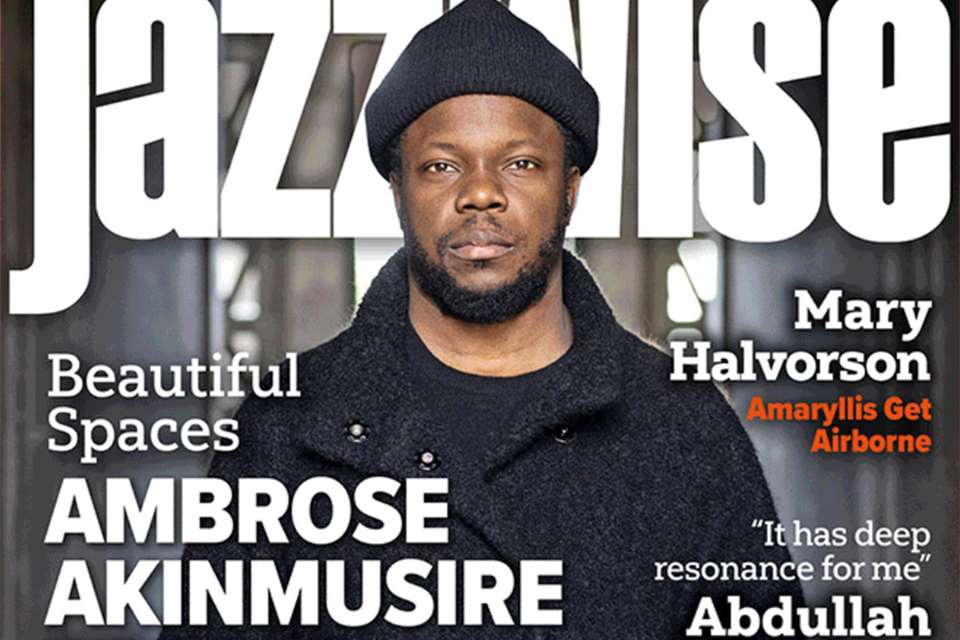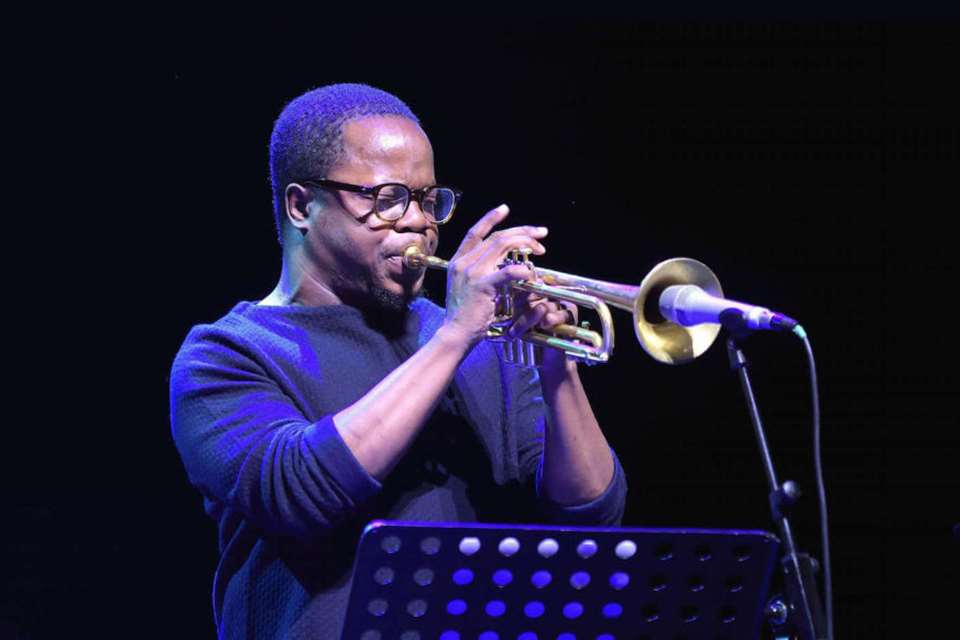Ambrose Akinmusire interview: “I’ve never been comfortable with the jazz trumpet soloist vibe”
Nick Hasted
Friday, February 16, 2024
Oakland-raised Ambrose Akinmusire has always eschewed the usual trumpet clichés to forge a unique sound full of powerful emotions. Leaving the Blue Note label after five acclaimed albums, he begins a new adventure on Nonesuch with Owl Song, with Bill Frisell and Herlin Riley
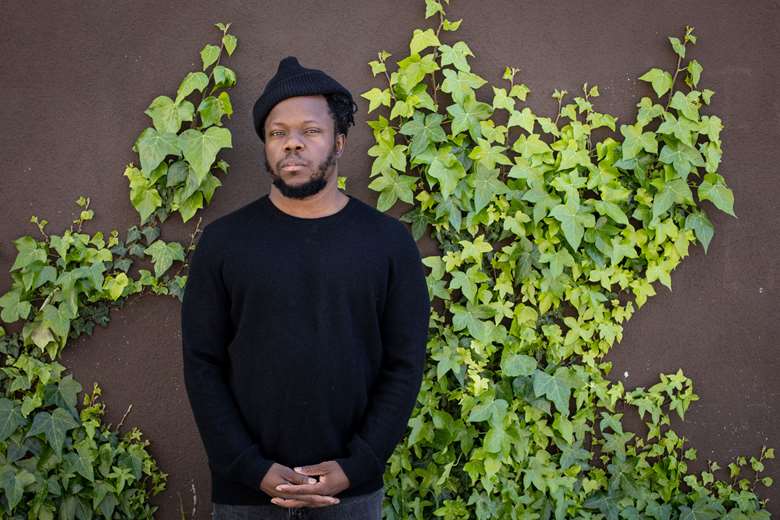
“This is the cat,” Archie Shepp exclaimed in his liner notes to Ambrose Akinmusire’s sixth album, On the Tender Spot of Every Calloused Moment (2020). Working with the then barely known trumpeter on Shepp’s Attica Blues Orchestra project in Toulouse in 2012, the younger man’s ceaseless study of his instrument had called to mind watching Coltrane between sets at the Five Spot, a jazz lifetime ago. No current musician seems so rooted in that tradition, while striking into such personal territory that jazz’s past doesn’t hold him.
Following five acclaimed albums on Blue Note, Akinmusire, 41, moved on again decisively late last year, first with his significantly titled solo trumpet album Beauty Is Enough, recorded in Paris’s Église Saint-Eustache cathedral and self-released on his new Origami Harvest label. Now his debut on Nonesuch, Owl Song, introduces a trio with Bill Frisell and Wynton Marsalis’s drummer Herlin Riley. The first of three albums Akinmusire will release in the next year, it’s a determinedly understated new start, a bare, limpid distillation of his sound, its murmured beauty and shifts of tone revealing more with each listen. Where early albums When the Heart Emerges Glistening (2011) and The Imagined Savior Is Far Easy to Paint (2014) were panoramas ranging from string sections to hip-hop, Owl Song stays where it is, steadily offering Akinmusire’s trumpet’s tone of melancholy balm.
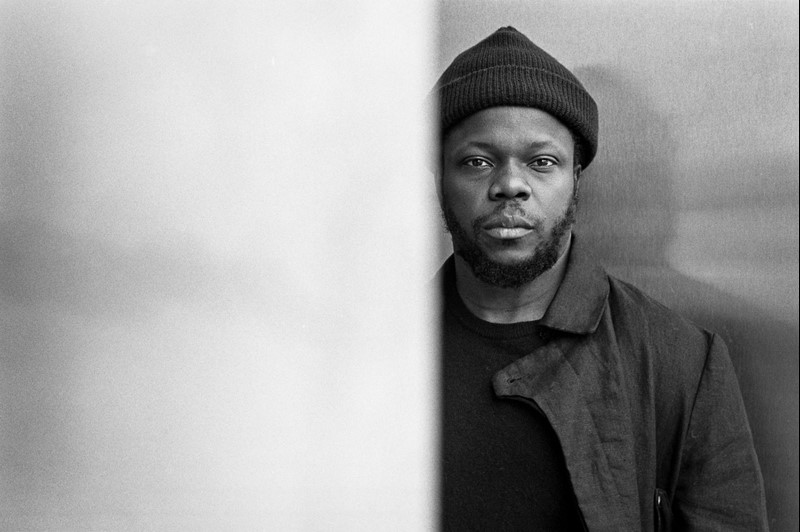
Ambrose Akinmusire (photo: Michael Wilson)
“A lot of my favourite records explore a mood,” Akinmusire tells me down the line from his Berkeley home, “like [Coltrane’s] Crescent, Kind of Blue, Erroll Garner’s Concert by the Sea, Björk’s Vespertine, or anything Glenn Gould plays.”
Beauty Is Enough laid the ground. “It represented me recommitting myself to beauty,” he says. “When you’re younger, it’s hard to think that’s enough, I wanted to play everything that came into my head. But I was in this period of only wanting to express the beautiful part, the core of things.”
He considers the life-changes that led to this: “It’s been a few things. My relationship with Roscoe Mitchell, a collaboration with Wadada Leo Smith and conversations with Henry Threadgill. Also the pandemic, having a son, who’s now seven, and me deciding not to re-sign with Blue Note.” Leaving Blue Note alone was a step into the unknown. “I didn’t know what I was going through,” he considers, “but I wanted to have room to not know. I had been on Blue Note for 12 years, they were great and I had complete creative freedom. But something about its associations guided the music I made, and I’ve never been comfortable with the jazz trumpet soloist vibe. If you go back to my first record [2008’s Prelude…to Cora], the first track doesn’t have a trumpet solo, then an opera singer comes on! I’ve never known exactly where I fit, and I like that.”
Akinmusire’s discomfort with solos even extends to the bandstand, where he sometimes sits out more than he plays. “I’m just a conductor and composer, and I happen to play the trumpet,” he contends. “Some nights the music tells me to play a lot, and sometimes not to play at all. If you go to a classical show, trumpets are mostly used for punctuation and accents and climaxes - they’re not featured all the time.”
“My concern lately is making sure that my tree bears fruit”
Rather than the climactic, blazing trumpet of Louis Armstrong, Lee Morgan or Akinmusire himself on early tracks such as ‘Richard (Conduit)’, he also goes deepest when he plays soft and low. Where the Heart Emerges Glistening’s ballad ‘Henya’ was the song to wait for at early shows, stilling even a standing, tented crowd at Love Supreme, the music almost collapsing in on itself in a black hole of beauty. At a 2018 Brighton Dome show, too, he played a ballad with a healing tone that bruised and broke. Owl Song closes with a re-recording of ‘Henya’, the old song closest to where he’s at.
“The ‘it’ you were waiting for with ‘Henya’ is the mood I was in when I created the solo record and Owl Song,” Akinmusire agrees. As when he bent a note till it cried on ‘Henya’s original take, such hushed ballads sound like the blues. “A lot of my career so far has been about blues,” he accepts. “My blues, how to express a modern blues, what is a blues of my people, what is a blues of the world - if there is a single blues that we all experience. Often for me a blues comes from silence and trying to maintain a centre, with everything around us being so hectic and challenging.”
Akinmusire has also long been interested in strings’ ability to sustain a note, rare in typical jazz instruments such as his own. Owl Song’s ‘Grace’ shows a similar attitude to time and space as he turns repeated phrases around rather than moving on, going deeper in, not further out. “That’s why that line develops like that,” he agrees, “it starts really short, and then we go deeper and it keeps growing. It’s not linear - it’s down, and into…”
Akinmusire grew up in Oakland, the blacker, more working-class Bay Area city across from San Francisco. There, he imbibed what are glibly called church chops.
“My mom is from Mississippi, so I went to church a lot with my mom and grandma,” he recalls. “That’s where my relationship with music started. I can remember as a kid staring at the choir and the piano-player, and wondering why it felt that way – it felt transcendent, I could feel it bypassing everything in the room. I’m so glad I walked into music through that door initially, and not private lessons or some technical thing. It’s always been spiritual for me.”
When Akinmusire was taught, it was by Bay Area eminences such as the late trumpeter Robert Porter, his first mentor from the age of 14 in 1996, who he honoured with Porter, his 2022 suite commissioned and performed in San Francisco with a quartet and 30-piece orchestra.
“I got lucky,” he says. “I tell people this all the time, but they don’t understand unless they’ve been here – Oakland is a sacred ground. As soon as you put your foot down, it’s different. So yeah, I had great mentors here - ex-Black Panthers and people who had played with Basie or Pharoah, and knew Duke and Miles and Ray Charles. Herbie Lewis was at the first Jazz Camp I went to, it was crazy. My first jazz combo didn’t play some basic blues, we played Jackie McLean’s ‘Appointment in Ghana’, then an Art Ensemble song. And there was Yoshi’s jazz club, and a great radio station called 9.11 KCSM, where I won tickets to see the Art Ensemble of Chicago, which was my first jazz show - only in the Bay Area could that happen. It was so amazing, they came out, and they faced east for 10 minutes, in silence. My association with music up until then was that it’s spiritual, and they confirmed it, before they played one note. I’d felt that way before, listening to records by Art Blakey, Lee Morgan and Louis Armstrong, but seeing it was different.”
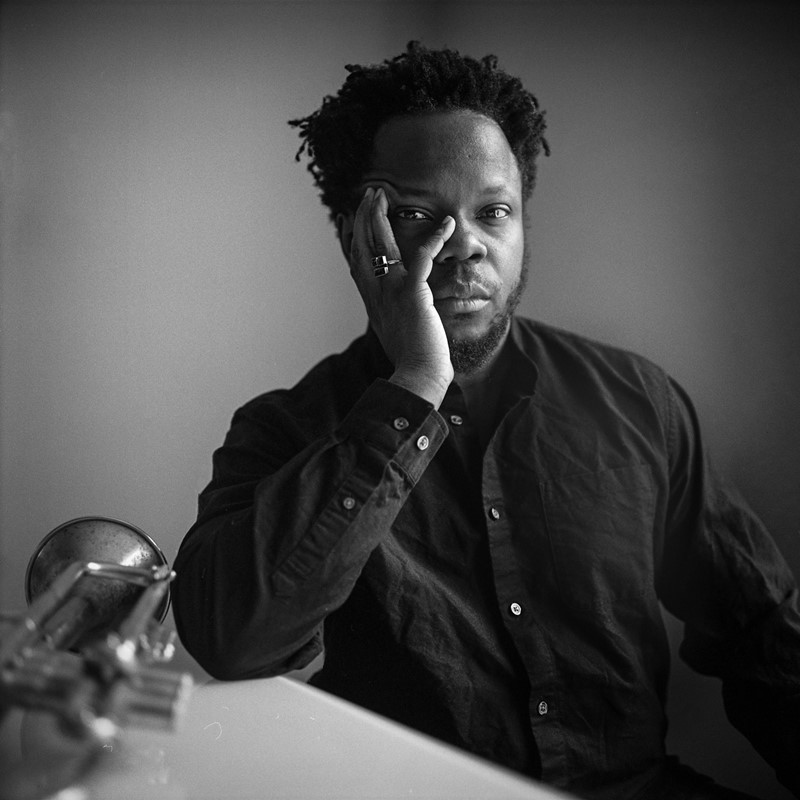
Ambrose Akinmusire (photo: Michael Wilson)
Steve Coleman noticed Akinmusire when he was still at Berkeley high school, and asked him to join his Five Elements band for his European tour the following summer. “Steve was the first person who wasn’t satisfied with anything he did, he was already looking for the next thing,” Akinmusire recalls. “His commitment to the music changed my life.” He went on to study and scuffle in New York with a spell in LA in between, announcing himself by winning 2007’s Thelonious Monk International Jazz Competition. A quickly stellar career followed as leader, with sideman work from Mary Halvorson to highly romantic playing on last year’s Jazzwise favourite, Billy Childs’ Winds of Change.
“Origami Harvest [2018] was about me moving back to Oakland, when I was still optimistic and happy,” he reveals. “But my next project will be its sequel, Honey From a Winter’s Stone, about moving back and wanting to have my kid experience the Oakland that I did, and it not being there.” He considers what was missing. “The sense of black community, black aesthetics - black culture here’s become very nostalgic, as opposed to you being part of it now.” It sounds like the bittersweet film The Last Black Man in San Francisco (2019), whose hero Jimmie Fails desperately tries to reclaim a gentrified house representing everything he used to have.
“That’s such a beautiful film,” Akinmusire says, “and I know a lot of people that are trying to do exactly that. They’re trying to hold onto these old pieces of Oakland, and almost hoping that the tree gives a seed, and that they can regrow the forest tree by tree.”
Akinmusire himself has moved to the nearby college town of Berkeley, an experience his next record will also detail: “I never lived anywhere but Oakland as a kid, so it’s very painful. But you want your kid to have the best chances of survival, and I had to move to Berkeley for my kid to go to school. If it were just me, then I would stay, but it’s not about me any more. I live 15 minutes away from where I was, but it feels like a whole different planet.”
Oakland’s holy soil, though, hasn’t been abandoned: “There’s less people, but somebody’s always here, pouring their blood into the soil and tilling it. People make it their lives’ commitment. A reason that I came back and that I’m staying [in the area] is because I’m pouring my blood into the soil.”
‘Roy’, a lovely, elegiac On the Tender Spot of Every Calloused Moment tune of less than three minutes, pays tribute to another teacher, the late Roy Hargrove, who is thanked 13 times in the album’s credits. The two men’s long and sometimes difficult relationship says a lot about Akinmusire’s place in jazz’s past and future.
“Roy made jazz something that I could relate to,” he reflects. “I was into jazz already when I saw him, but I was the weirdo kid, it was something outside of my community. I had vintage records and a Wynton Marsalis CD, and Wynton definitely didn’t look like my community. But Roy looked and talked the same as Dr Dre. Then when I came to New York, ah, man, I would hate to see him! I would go to a jam or gig and he would sit in and kick my ass. After that, he actually didn’t like me very much, because like a lot of my mentors, he felt that I was going away from the jazz tradition too much. Roy said to me: ‘Why aren’t you swinging? People need to hear you play bebop.’”
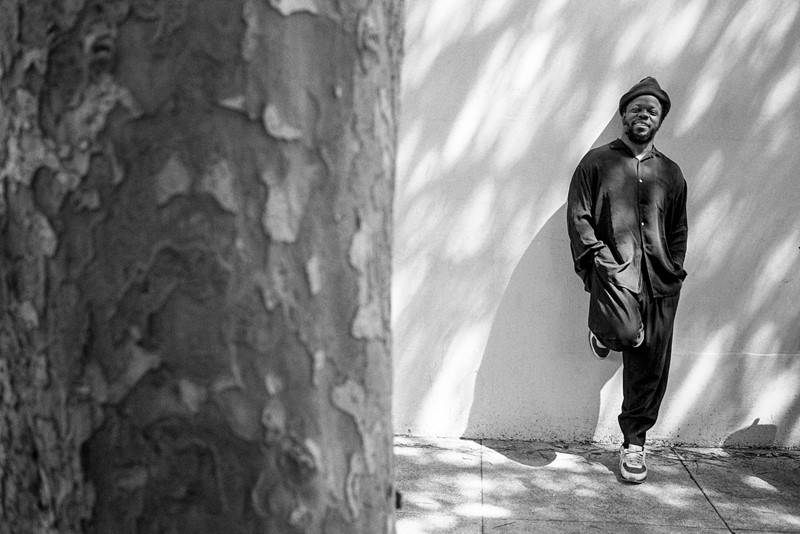
Ambrose Akinmusire (photo: Michael Wilson)
Hargrove mellowed over time, as he better understood where Akinmusire was headed: “We hung out for hours in Switzerland once. Roy had some health problems by then and his chops went down, but somebody had the same type of horn that he had when I first heard him. I begged him to play it, and he sounded like the Roy I first heard, it was so nostalgic and perfect. His whole thing was still, ‘Ambrose, there’s a lot of kids looking up to you, I need you to play some bebop so they know they have to learn it!’ I saw him one last time after that. I was in Smalls, and he looked me dead in the eyes and said, ‘Ambrose, there was this thing on the radio last week, man, it was so cool I made the driver pull over to listen, then they said it was you. And you know how I know that was real? Because I could never play that shit, man.’ He gave me a hug and walked out of the room, and that was the last time I saw him.”
The very idea of 'the tradition' is sometimes dismissed as archaic by European musicians who’ve moved beyond it. But Akinmusire and Hargrove’s argument shows its enduring importance to the black inheritors of the music’s source. Akinmusire is, though, rooted in a bigger black American experience indivisible from jazz – from the Aretha Amazing Grace gospel album that was a staple of his mother’s Sundays to hip-hop, and the black victims of racist violence memorialised in a succession of his tracks such as ‘Hooded Procession (Read the Names Outloud [sic]’).
“I would hope so,” he says simply. “Yeah, that feels right and good.” This made Akinmusire a natural contributor alongside Kamasi Washington to hip-hop king Kendrick Lamar’s To Pimp a Butterfly (2015), crucial in showing recent hip-hop fans that jazz belonged to the same world. “I also like to look at it from the other side,” Akinmusire observes. “That’s an important record for Kendrick, because it has creative or jazz musicians on it.”
Even as Owl Song is released, Akinmusire is already beyond its distillation of a mood, readying the next project just as Steve Coleman first taught him. What, then, is his relation to his roots, as he presses on?
“I’m directly in line with it,” he says immediately, “and reaching up and down, just like a tree. It’s all one thing, some of it you can see, and some of it you can’t. I’m still checking tradition and trying to do deeper. Like I’ve been recently obsessed with Louis Armstrong again - man, not only the music, but politically, and just understanding that there wasn’t much before him to inform him. At the same time I’m on Instagram and Youtube looking for the newest 18- or 19-year-olds. My concern lately is making sure that my tree bears fruit - that’s why I took my position as artistic director at the Herbie Hancock Institute. I really try to be connected to the tradition and in line with myself, which would be the trunk. And I also try to reach towards the future, the leaves and the fruit.”
This article originally appeared in the February 2024 issue of Jazzwise. Never miss an issue – subscribe today
